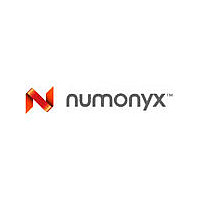M28W640HCT70N6E NUMONYX, M28W640HCT70N6E Datasheet - Page 25

M28W640HCT70N6E
Manufacturer Part Number
M28W640HCT70N6E
Description
TSOP-1 48 12X20 CUSTD FLASH
Manufacturer
NUMONYX
Available stocks
Company
Part Number
Manufacturer
Quantity
Price
Company:
Part Number:
M28W640HCT70N6E
Manufacturer:
JRC
Quantity:
9 100
M28W640HCT, M28W640HCB
5
5.1
5.2
5.3
Block locking
The M28W640HCT and M28W640HCB feature an instant, individual block locking scheme
that allows any block to be locked or unlocked with no latency. This locking scheme has
three levels of protection:
●
●
●
The protection status of each block can be set to ‘Locked’, ‘Unlocked’, and ‘Lock-down’.
Table
Figure
Reading a block’s lock status
The lock status of every block can be read in the Read Electronic Signature mode of the
device. To enter this mode write 90h to the device. Subsequent reads at the address
specified in
represented by DQ0 and DQ1. DQ0 indicates the block lock/unlock status and is set by the
Lock command and cleared by the Unlock command. It is also automatically set when
entering Lock-down. DQ1 indicates the Lock-down status and is set by the Lock-down
command. It cannot be cleared by software, only by a hardware reset or power-down.
The following sections explain the operation of the locking system.
Locked state
The default status of all blocks on power-up or after a hardware reset is ‘Locked’ (states
(0,0,1) or (1,0,1)). Locked blocks are fully protected from any program or erase. Any
program or erase operations attempted on a locked block will return an error in the Status
Register. The status of a locked block can be changed to ‘Unlocked’ or ‘Lock-down’ using
the appropriate software commands. An unlocked block can be locked by issuing the Lock
command.
Unlocked state
Unlocked blocks (states (0,0,0), (1,0,0) (1,1,0)), can be programmed or erased. All unlocked
blocks return to the locked state after a hardware reset or when the device is powered-down.
The status of an unlocked block can be changed to ‘Locked’ or ‘Locked-down’ using the
appropriate software commands. A locked block can be unlocked by issuing the Unlock
command.
Lock/unlock - this first level allows software-only control of block locking
Lock-down - this second level requires hardware interaction before locking can be
changed
V
erase on all blocks.
10, defines all of the possible protection states (WP, DQ1, DQ0), and
PP
21, shows a flowchart for the locking operations.
V
PPLK
Table
- the third level offers a complete hardware protection against program and
6, will output the protection status of that block. The lock status is
Appendix
Block locking
C,
25/72












